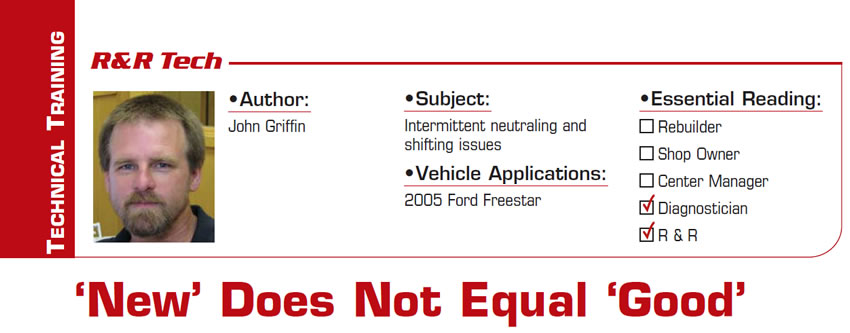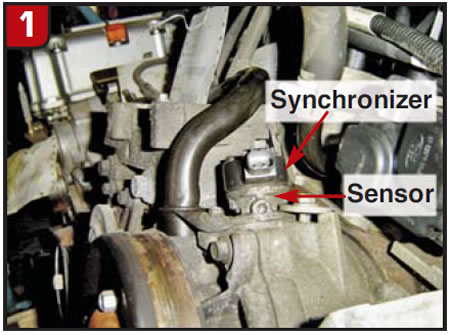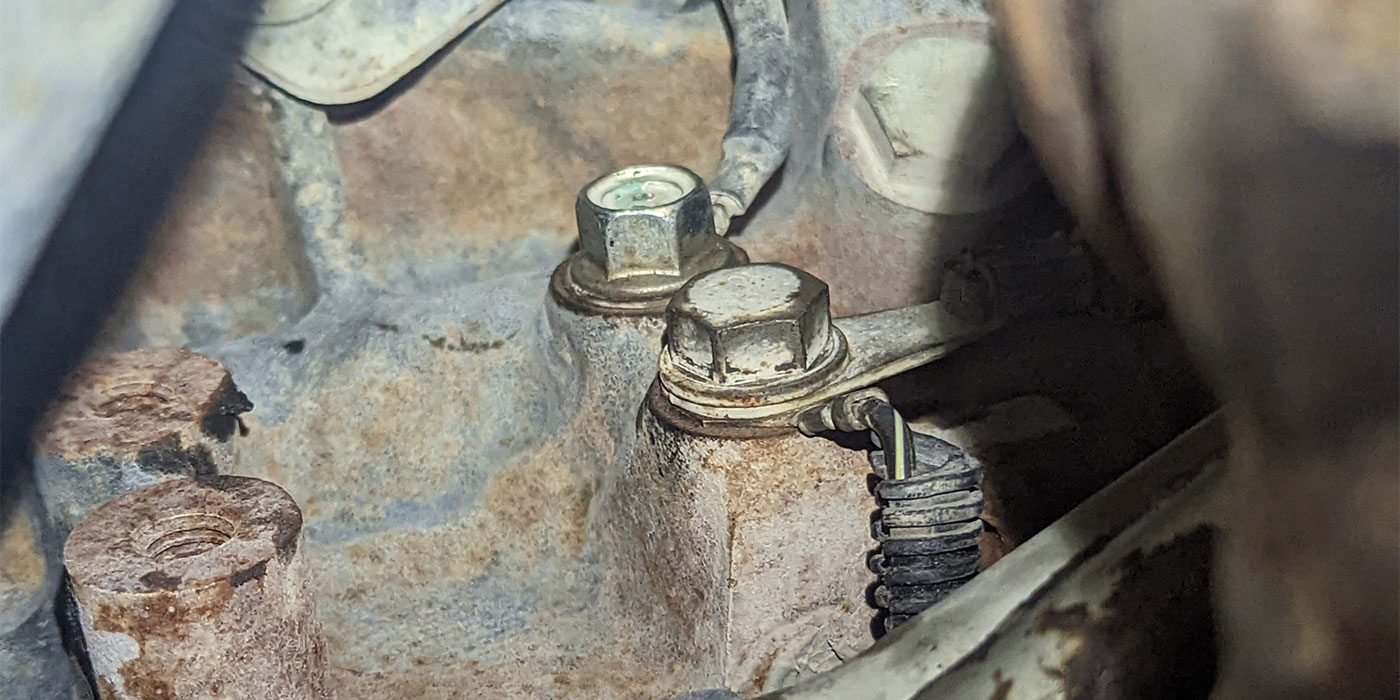
R&R Tech
- Subject: Intermittent neutraling and shifting issues
- Vehicle Application: 2005 Ford Freestar
- Essential Reading: Diagnostician, R & R
- Author: John Griffin
Diagnosis is a challenge for any shop. Sometimes things can get even more complicated because of a previous repair, or a part that has been replaced recently. This case involves both of these scenarios. After all, we really want to believe that a new part is a good one, right?
The 2005 Ford Freestar arrived at my bay with 120,000 miles on the odometer and a complaint of intermittent neutraling and shifting issues with the transmission. A quick pre-road-test inspection revealed brown and varnished transmission fluid. Although there was no check engine light on, there was a code stored in memory, P0340. This code is for a camshaft-position-sensor fault. I wasn’t too concerned with the code itself; the customer had reported that this sensor had been replaced previously by another shop, so it was possible that the technician had forgotten to clear the codes after the repairs. A visual inspection revealed a very new-looking cam sensor.

I cleared the codes and set out for a little windshield time. I noted that the transmission had a delayed engagement when cold. It also had a flare on the 1-2 shift. The check engine light did not illuminate at all, and when I got back to the shop I retested for codes and there were none. On the basis of the lack of any indication that this could be an electrical issue, and the fluid condition, I recommended that we replace the transmission with one of our remanufactured units.
The reman unit was installed, so I set out for a post-installation road test. I got two or three miles to get to the interstate with no issues at all, and the transmission was operating perfectly. As I traveled down the onramp and merged onto the interstate, I got up to cruising speed and still had no issues. As I accelerated up an incline in the roadway and as the transmission downshifted to accommodate the hill, the van suddenly nose-dived and lost power. I also heard a strange chirping noise from under the hood when this occurred.
After this initial power loss, operation returned to normal. However, I was able to replicate this condition on an intermittent basis over the next eight miles of driving. Within that time, I got it to occur about four more times. In the course of doing this, the check engine light illuminated. I again retested for codes and found that the P0340 had indeed returned, so I went back to the shop to perform further testing.
As the van idled in the bay with the hood open, nothing seemed out of the ordinary. If I accelerated the engine the chirping that I heard on the road returned intermittently. I had an assistant take over the accelerator duties while I poked around the cam sensor with a stethoscope. Sure enough, the noise was being generated by the cam sensor.
I pulled the cam sensor off the drive housing to inspect it. There was no sign of internal damage to the sensor. I decided then to pull the drive housing (synchronizer per Ford nomenclature) from the engine so I could inspect it more closely. I brought cylinder #1 to top dead center, marked the housing and pulled the synchronizer for inspection.
Inspection revealed a very worn synchronizer shaft and housing. This was allowing the shaft to have lateral movement that was creating internal contact and causing the squeaking noise. After researching this further, I found out that this is actually a relatively common issue for Ford. Also, a genuine Ford cam sensor comes as a synchronizer assembly, with both the sensor and the housing. What usually happens is that the shaft wears and allows the “window” to contact the sensor, causing noise and, ultimately, breakage. The previous technician had addressed only the failed sensor without addressing the root cause: the synchronizer.
This case goes to show that just because the part is new, that doesn’t mean that it’s good. Fortunately, we were able to make a happy customer at the end of the story, which is what’s most important anyway.














